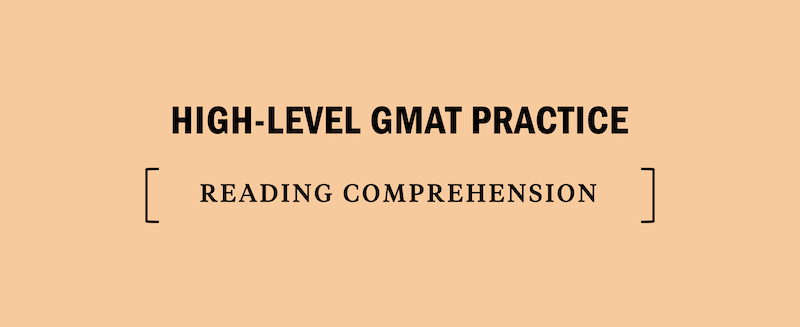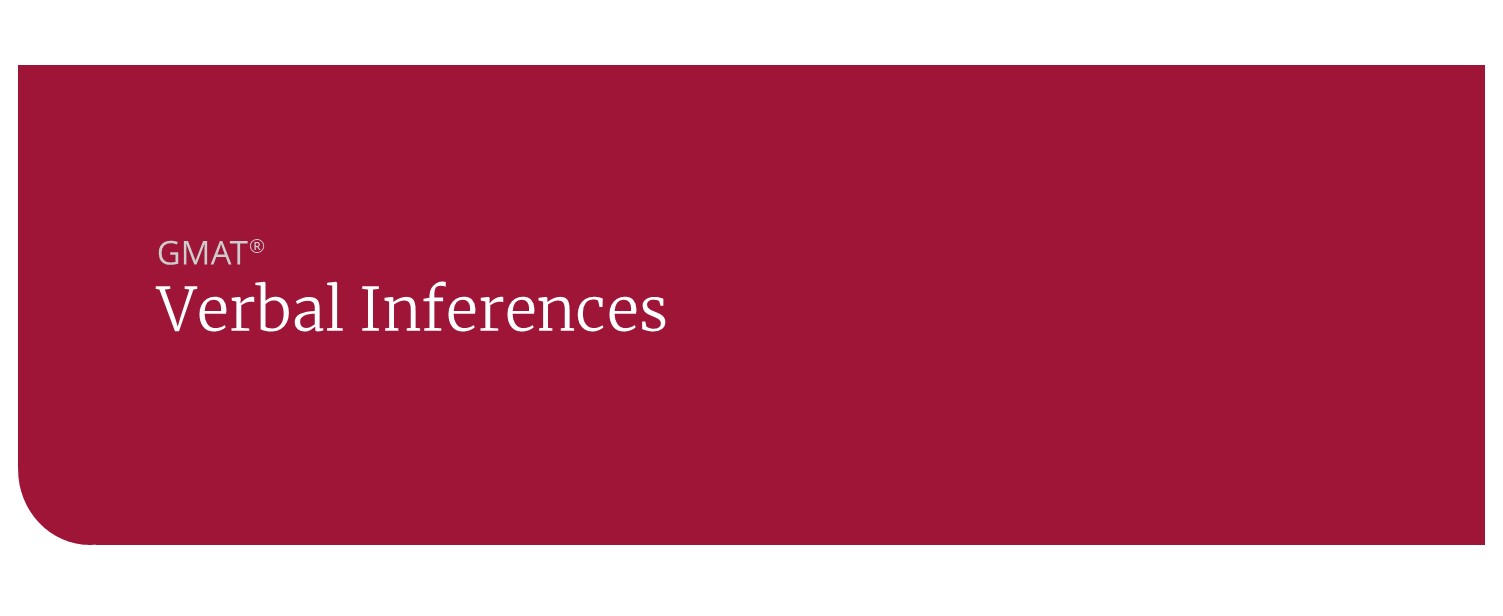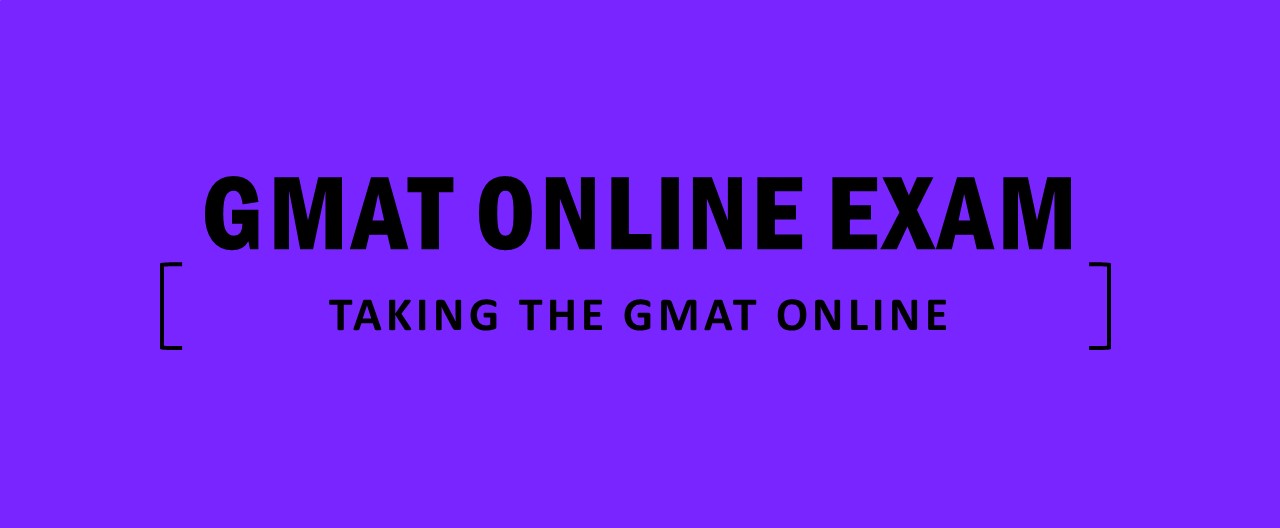The Kaplan Method for Data Sufficiency Questions on the GMAT
Data Sufficiency (DS) questions are unique to the GMAT. When first encountered they are cumbersome, confusing, and generally frustrating. Admittedly, Data Sufficiency questions often remain cumbersome, confusing, and generally frustrating, but such is the nature of the GMAT. After all, the better you do, the harder the test gets! However, a thorough understanding of the characteristics and attributes of these questions coupled with a proven method of attack will allow you to handle just about anything the GMAT has to offer.
The prescribed task for Data Sufficiency questions is straightforward enough: based on the provided information, determine whether a posed question can be answered. The structure of these questions is unwaveringly consistent: a question is asked, two statements of additional information are provided, and the five answer choices that follow are always the same.
Data Sufficiency Questions Types: Value and Yes/No.
- A Value question asks for a numerical value (e.g., What is the value of x?). For information to be considered sufficient, that information must allow us to deduce only one value for x.
- Yes/No questions (e.g., Is x odd?) merely want one of those answers, either of which is acceptable.
For Yes/No DS questions, it is that last bit that presents somewhat of a dogleg in the conceptual understanding of this type. Simply put, test takers must recognize and accept that “no” is a sufficient answer. Consider the presented example “Is x odd?” Now, if, through the provided information, we learn that x is not odd and instead x is even, then we would be able to answer the question. The answer would be, “No. x is not odd. x is even.” Answering the question is all we need to be able to do.
Let’s keep with the example for a moment longer. A very common misstep would be that, after learning xis definitively even, a person then concludes the provided information is insufficient. But why? We answered the question, didn’t we? Remember: if you can unequivocally answer a Yes/No DS question with either a “yes” or a “no,” you’ve got sufficiency. Insufficiency is the result of information that, when evaluated, culminates in a “sometimes yes” and/or a “sometimes no” response. Sometimes is not good enough. Always is mandatory.
Kaplan Method for Data Sufficiency
As with every question format on the GMAT, you must have a proven step-by-step methodical approach. Do this for every Data Sufficiency question:
- Analyze the Question [This first step consists of three separate parts.]
- Determine if it is a Value or Yes/No question type.
- Simplify the question. [For example, if the question is “What is the value of m if n = 3t – 2m?” then you would rearrange the given equation in the form of m = (3t –n)/2 since the question asks about m.]
- Identify what information, if it were provided, would be sufficient to answer the question. [In the above example, we would look for values of t and n, two additional equations using these variables, or a value for the expression (3t –n)/2.]
- Evaluate the statements (aka, the provided information) using 12TEN. [I’ll break down what 12TENstands for in the answer choice discussion below.]
Note what happens when using the Kaplan Method for Data Sufficiency: you do a lot of work before you look at the statements. Such an approach is essential if you truly want to beat GMAT DS questions.
Data Sufficiency Answer Choices
Now, let’s consider the answer choices. As stated, the five answer choices for DS questions are always the same. Step 2 of the Kaplan Method for Data Sufficiency uses a handy mnemonic that helps keep those answer choices straight as well as ensures you assess the statements in the proper order.
Here’s the breakdown:
(1) The first statement provides enough information to answer by itself, but the second statement does not;
(2) The second statement provides enough information to answer by itself, but the first statement does not;
(T) Only when the two statements are considered together does one have sufficient information to answer the question;
(E) Either statement provides enough information to answer the question when considered individually;
(N) Neither statement, when considered alone or together, provides sufficient information to answer the question. Additional information is necessary.
As per the answer choices as well as Kaplan’s mnemonic, it is imperative that you evaluate the two statements individually before assessing them together. After evaluating Statement 1, regardless of whether it was sufficient or insufficient to answer the question, you must pretend as if you never saw it when you take a look at Statement 2. The only time you use the information in both statements together is if each individually were found to be insufficient on their own. At that point, you are only deciding between answer choices T and N.
Applying The Kaplan Method
Now let’s see how to apply the Kaplan Method to one of the most challenging question types on the GMAT: “Yes/No” Data Sufficiency questions. These require more practice (and critical thinking skills) than any other part of the test.
Let’s begin with a sample GMAT question:
The first step in the Kaplan Method for Data Sufficiency is to Analyze the Question Stem. First, we note that this is a Yes/No question. Because we are concerned with the sum of three consecutive positive integers, we can craft an equation by calling the smallest integer x. This makes the other integers (x + 1) and (x + 2), respectively. Therefore, the sum of the three consecutive integers can be written x + (x + 1) + (x + 2). By combining like terms we see that t = 3x + 3. We can then factor and get the equation t = 3(x + 1).
Because this is a Yes/No question, we aren’t looking for the value of t or x. What we need to know is, “Is 3(x + 1) a multiple of 24?”
Next, we evaluate the statements. Statement 1 tells us that the smallest integer is even. If x is even, then x + 1 will always be odd. And 3 times an odd integer is always odd as well. Odd numbers cannot have even factors, so because t is always odd, we know for certain that the answer to the question is No; t is not a multiple of 24.
Inexperienced test-takers often forget a critical fact at this point. It is easy to look at this evaluation, see that the answer is No, and conclude that Statement 1 is therefore Insufficient. “No” is the same as Insufficient, right? Without thinking critically, you could fall into this trap!
Apply critical thinking to evaluating statements
The key to correctly evaluating Yes/No Data Sufficiency GMAT questions is to recognize that the answer itself doesn’t matter; whether the answer is definite is all that matters. Here, we know that t is ALWAYS odd, which means the answer to the question is ALWAYS NO. That is as sufficient as it gets! You don’t need anything else to have a definitive answer to the question posed.
The best way to evaluate Statement 2 would be to imagine numbers that are multiples of 3, then ask whether they are always multiples of 24 (or whether they are never multiples of 24). It doesn’t take long to see that 15 is a multiple of 3 but is not a multiple of 24. However, 24 is also a multiple of 3, and it IS a multiple of 24. So one number yields a No answer and the other yields a Yes. Because this statement leads you to two possible answers, it is Insufficient. “Could be Yes, could be No” equals Insufficient every time.
The takeaway here is that “Always No” is always Sufficient. Drill yourself on Yes/No questions to be sure this clicks; Yes/No questions require a definite answer, regardless of whether that answer is Yes or No.
Jennifer Mathews Land has taught for Kaplan since 2009. She prepares students to take the GMAT, GRE, ACT, and SAT and was named Kaplan’s Alabama-Mississippi Teacher of the Year in 2010. Prior to joining Kaplan, she worked as a grad assistant in university archives, a copy editor for medical websites, and a dancing dinosaur at children’s parties. Jennifer holds a PhD and a master’s in library and information studies (MLIS) from the University of Alabama, and an AB in English from Wellesley College. When she isn’t teaching, she enjoys watching Alabama football and herding cats.




